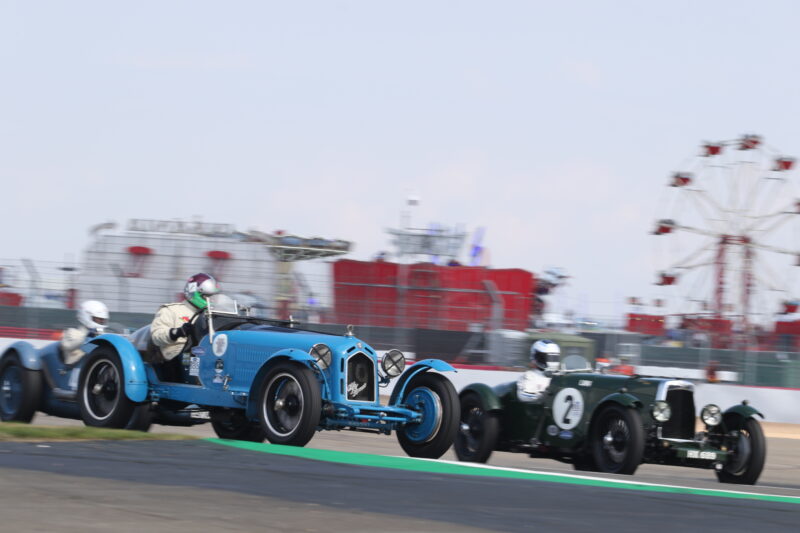Classic Cars – Use ’em or Lose ’em

We’ve all heard the old adage “use it or lose it” before haven’t we? Whether in relation to playing a musical instrument, staying in good physical shape, or indeed owning and driving a classic car or bike, they are wise words that do, at least in this case, express a general truth. Put down the guitar for a while and watch as your fretboard fingers, callused from years of playing, slowly soften. Stop exercising and your ability to function at an optimum level, physically, is gradually diminished. Be honest, how many of you reading this have recently side-lined your regular workout or running routines because of Christmas, only to try and get back on it in the new year, sadly discovering that you can’t lift as much or run quite as far as you could before the break? Your body needs to be used, that guitar needs to be played and your classic car needs to be driven.

Having just returned from a ten day road trip through five different countries covering over 1,300 miles in a classic car (a modern classic, granted, but the same still applies), it got us to thinking about said classic car’s ability to make such a trip unhindered and without incident had it been a garage queen or show pony rather than a daily driver, and we wholeheartedly believe that our little adventure wouldn’t have gone quite as smoothly or have been quite as enjoyable had we not been using our steed regularly in the weeks, months and indeed years leading up to departure.

Being a car that gets used day to day, we have an intimate working knowledge of it. We’re familiar with its foibles, up to speed on its shortcomings and aware of its eccentricities. We’ve kept on top of servicing and maintenance, allowing us to predict what could potentially go wrong with a good deal of accuracy and therefore plan accordingly. Classic cars are capricious at the best of times but we can mitigate the severity of that capriciousness simply by driving them on the regular, which in turn leads to us caring for and maintaining them correctly.

Cars want to be driven, it’s as simple as that, and they get grumpy when they’re not. Like a petulant child that’s missed out on an hour of soft play and a McFlurry at the weekend (other brands of ice cream are also available), they can and will throw their proverbial toys out of the window, usually at the most inopportune of moments, so it really does pay to keep them happy, not locked away in a garage, brooding contemptuously. It may seem counter-intuitive to some but attempting to preserve your classic by keeping it stationary will hinder its ability to function as an actual car – and that is exactly its raison d’être.

Because once you stop using a classic car as a car – its one true purpose – it ceases to be a car at all. It becomes an ornament of a bygone era, like those crap plates your gran used to have. Tucked away in a display cabinet pointlessly celebrating some meaningless royal appointment, not to be used as actual plates, and therefore sadly remaining unable to fulfil their potential as vessels for your Spag Bol, or anything else you care to make for dinner. It’s the same thing with cars, classic or otherwise. If you don’t drive them they’re just big, shiny paper weights.


Yes, we’re well aware that a 28 year old Volvo estate doesn’t have quite the same cachet as say, a Series 1 E-Type, but the same principle applies to all cars and bikes: rest equals rust, regardless of make, model or vintage. Granted, we may be a little more slapdash when it comes to the old spit and polish compared to that aforementioned Jag, but even if you are the lucky owner of a classic British sports car, or a priceless Ferrari 250 GTO for that matter, you can always clean it. There will always be someone who can repaint it for you or fix it when it breaks. The important thing is to actually give it the opportunity to get dirty in the first place, to allow it to potentially gain a few stone chips on the bonnet, because the alternative is a far more gloomy prospect.

Owning a classic and not driving it is baffling to us. Driving your classic won’t diminish its potential or make it any less desirable, generally speaking. What we guarantee it will do, however, is make you miserable, and we could all do with a little more enjoyment in our lives couldn’t we? In reality, as we’ve just tried to highlight, driving it will actually make it better, so stop fretting about putting a few extra miles on the engine or getting a bit of break dust on those shiny alloy wheels. Take a leaf out of our book instead and get out there and drive it.
We live and breath classics here at Car & Classic but we’re also wonderful facilitators, so if this little article has maybe inspired you to pick up a classic of your own, or even add another to your fleet, well, you’re in the right place. You know what they (we) say: New year, new classic…


